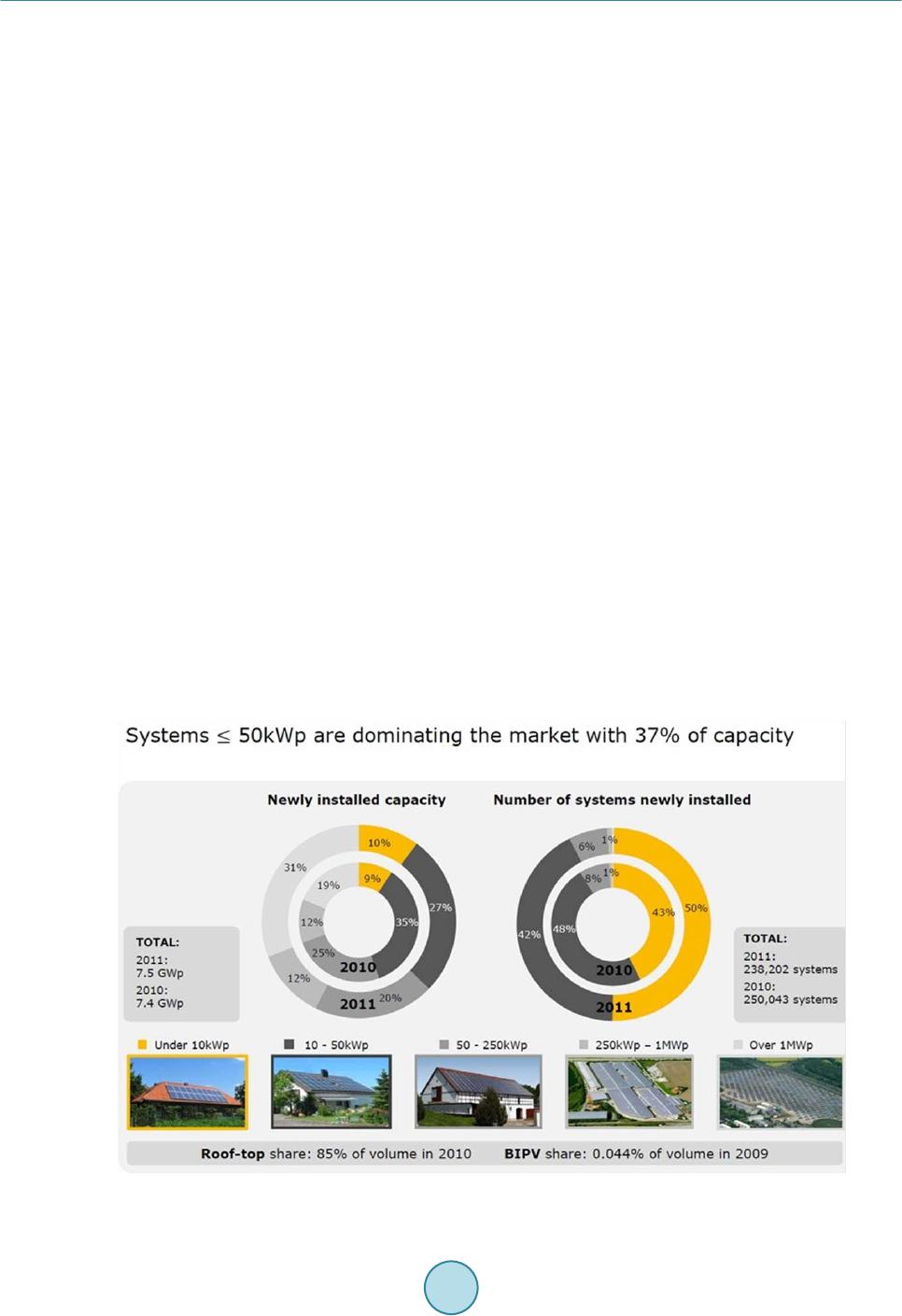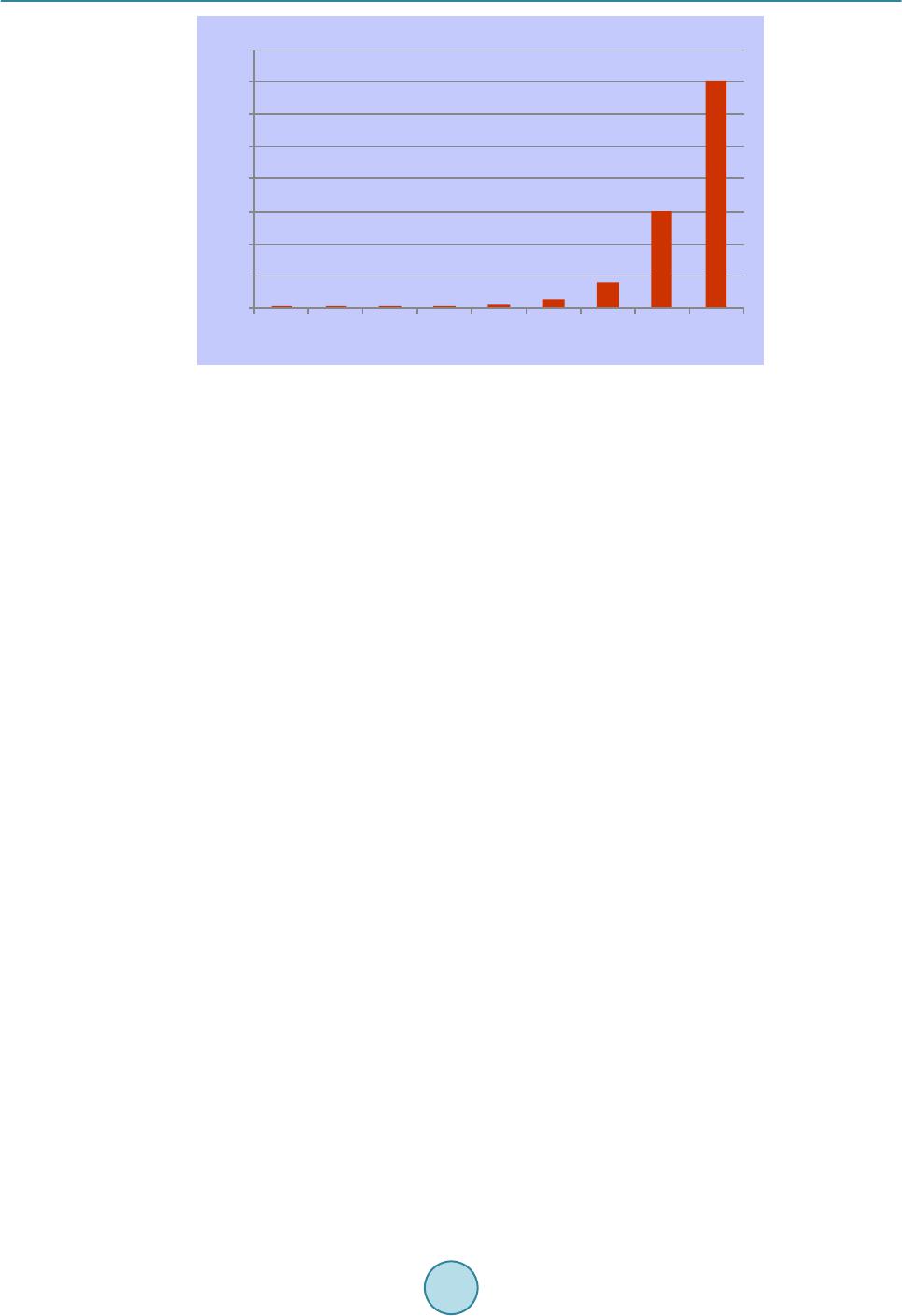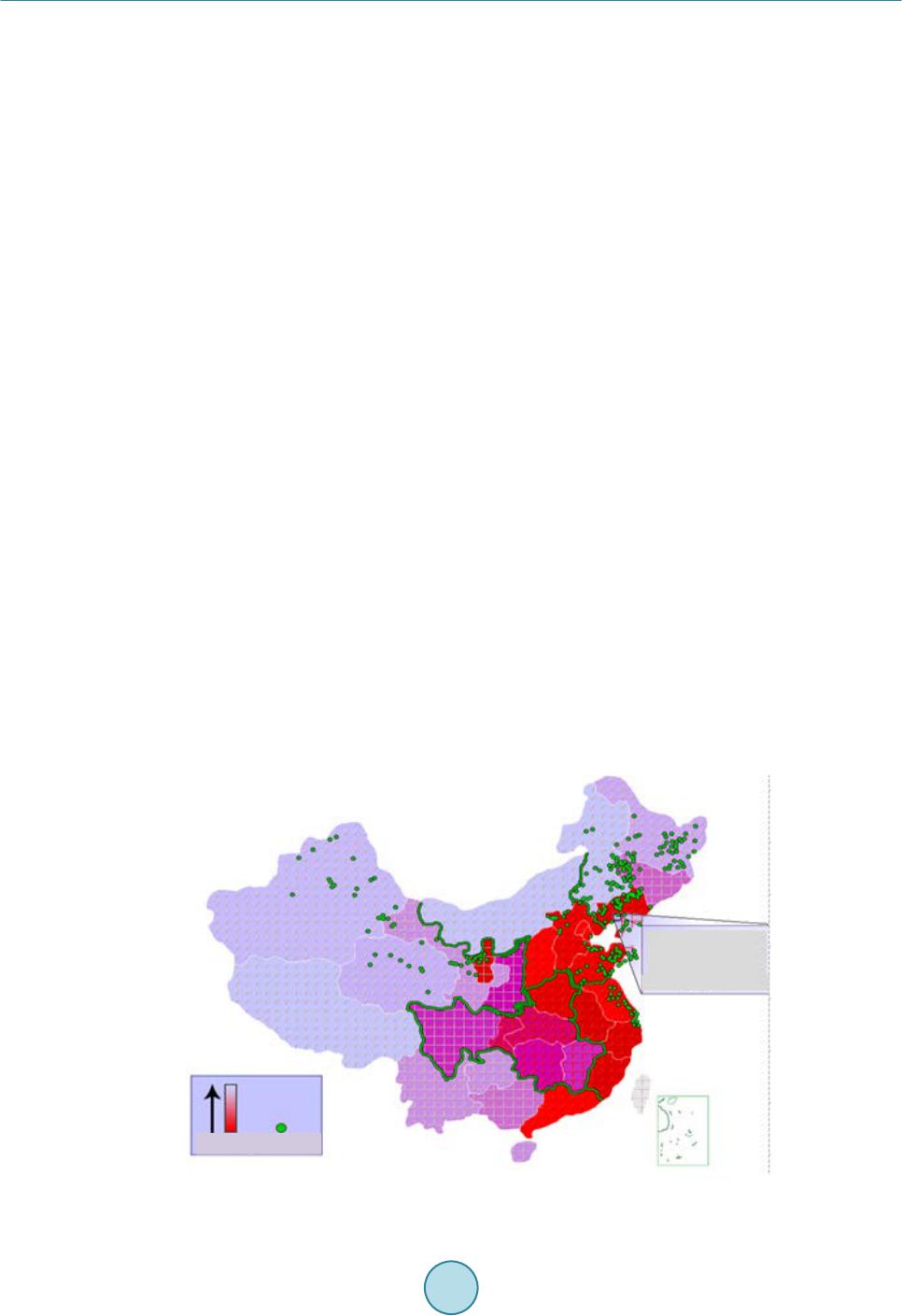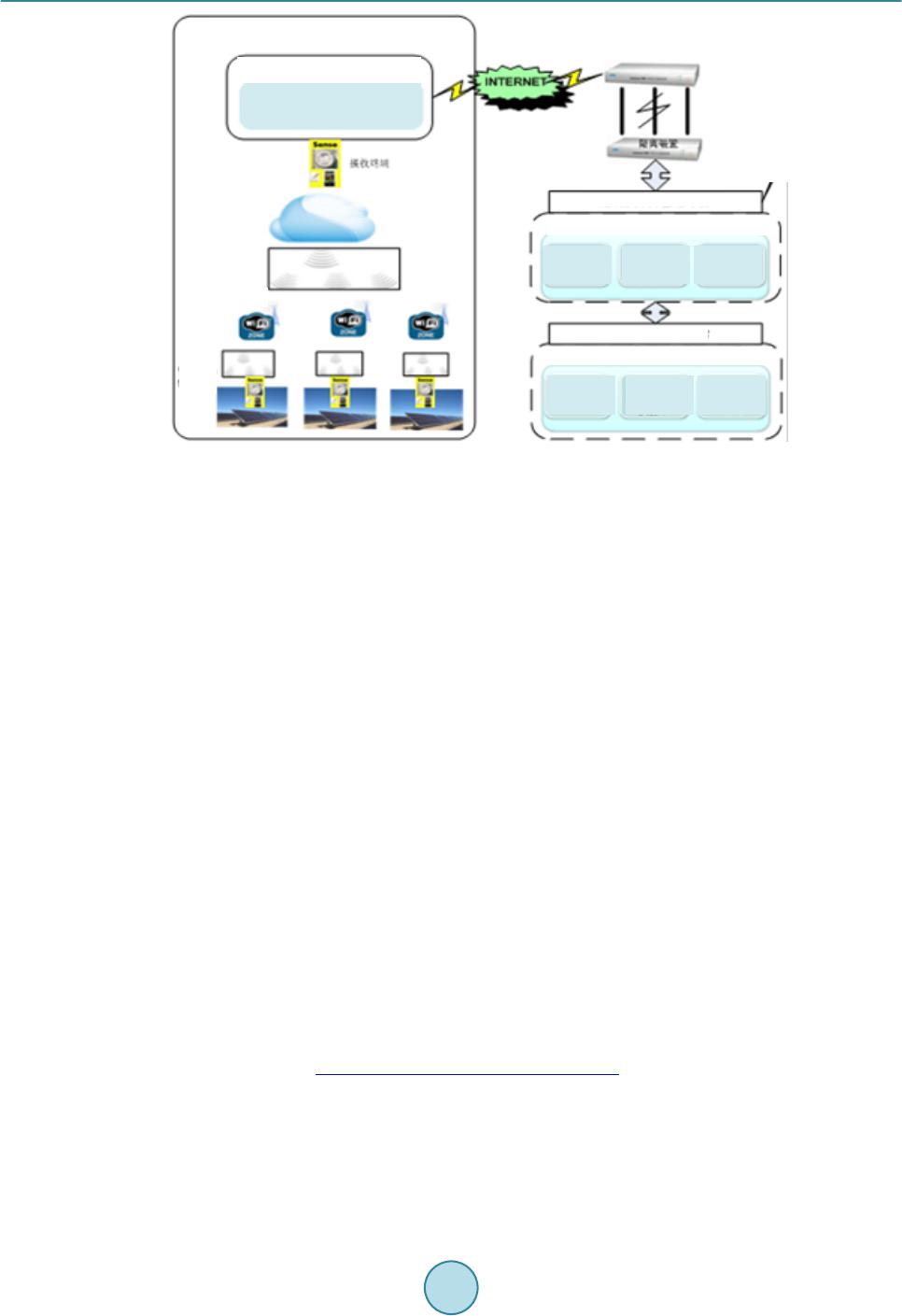 Journal of Power and Energy Engineering, 2015, 3, 326-331 Published Online April 2015 in SciRes. http://www.scirp.org/journal/jpee http://dx.doi.org/10.4236/jpee.2015.34044 How to cite this paper: Zhang, N., Wang, Y.F., Huang, Y.H., Liu, D.W., Gao, Y.F. and L i, H.F. (2015) Large-Scale Distributed Photovoltaic Power Dispatching and Operation Management Review. Journal of Power and Energy Engineering, 3, 326-331. http://dx.doi.org/10.4236/jpee.2015.34044 Large-Scale Distributed Photovoltaic Power Dispatching and Operation Management Review Nan Zhan g1, Yuefeng Wang1, Yuehui Huang1, Dewei Liu1, Yunfeng Gao1, Haifeng Li2 1Renewable Energy D epa rtme nt , China Electric Power Research Institute, Beijing, China 2State Grid Ji an gsu Electric Power Company, Nanjing, China Email: zhangnan@epri.sgcc.com.cn Received January 2015 Abstract Distributed photovoltaic power (PV) is the main development model of distributed generation. It is necessary to research on dispatching and operation management with large-scale distribu ted PV connected. This paper analyzes development status, technical requirement and dispatching and operation management situation of distributed PV in Germany and China. Then introduce the prep ar ati on of dist ribut ed PV dispatching and operation management criterion. Throu gh summa- rizing the experiences and lessons of larg e-scale di stri b uted PV development in Germany, it gives advice to the development of distributed PV dispatching and operation management in China. Keywords Distributed Photovoltaic Power, G rid -Con nected , Dispatching and Operation, Priority Consumption 1. Introduction With the national energy policy, distributed generators (DG) develop rapidly in China. It is estimated that the capacity of distributed wind power, distributed photovoltaic power (PV) and gas will be 20 GW, 60 GW and 50 GW respectively in 2020. The rapid development will bring new challenges to the grid safety, power quality and economical operation [1]. Basing on the domestic actual situation, distributed photovoltaic power (PV) is the mai n development model of distributed generation. In order to master the problem of dispatching and operation with PV accessed in advance, it is necessary to research on dispatching and operation management with large- scale distributed PV accessed. Distributed PV in China is developed late, so using the experience and lesson of other countries for reference is necessary. Distrib uted PV is developed fast in Germany. According to some statistics, energy output of PV in Germany reach to 20 GW in 2012, which is 4.5 percent of all types power sources’ energy output [2]. In this paper, firstly, the current situation, technical requirements and operation management criterion of distributed PV in Germany is analyzed. Secondly, technical requirements and o peration management criterion of distributed PV  N. Zhang et al. in China is analyzed. Lastly, according to the experience and lesson of large-scale distributed PV development in Germany, some su ggestion about distributed PV dispatching and operation management in China is proposed. 2. Distributed PV Dispatching and Operation Management in Germany 2.1. Current Dispatching and Operation Management Situation in Germany The Germanic renewable energy law which revised in 2004 encouraged private PV installation. Since then, ex- plosion of PV capacity begin as shown in Figure 1. Generally speaking, Germanic PV connected to medium-low voltage grid. As of the end of 2012, 99.5 percent of Germanic PV connected to grid below 60 kV, in which 65 percent PV connected to 380/220 V grid as shown in Figure 2. Two criterions aiming at distributed PV which connected to grid below 60 kV are proposed in Germany. The criterion name is “Technical minimum requirements for the connection to and parallel operation with lo w-voltage distribution networks” (below 1 kV) [3], “tec hnical minimum requirements for the connection to and parallel operation with medium-voltage distribution networks” (between 1 kV to 60 kV) [4]. The criterions stipulate technical require ments of distributed generation connection, and management requirement of connection, de- bugging, acceptance, operation and protection in detail. “Technical minimum requirements for the connection to and parallel operation with medium-voltage distribu- tion networks” summarize the basic requirement of power sources connected to medium-voltage distribution networks. The criterion which started in 1 Jan. 2009 apply to plan, construction, operation and modification of power sources as hydropower, PV, wind power and other distributed generation. Capacity of PV in Germany (MW) Figure 1. Gro wth trend of PV installed capacity in Germany. Figure 2. Grid-connected PV in Germany (GW).  N. Zhang et al. “Technical minimum requirements for the connection to and parallel operation with low-voltage distribution networks” (VDE-AR-N 4105) is drafted by verband Deutscher Elektrotechnikere. v (VDE). It is started in 1 Jul. 2012. VDE-AR-N 4105 proposes DG management requirement contains r e gulations, application document, and so on. The criterion apply to power sources as hydropower, PV, wind power and other distributed generation which connected to low-voltage distribution networks below 1 kV. 2.2. Current Problem of Distributed PV in Germany There are so many problems in the process of distributed PV development. Following are the main points. Firstly, unit capacity of distributed PV is small and its amount is huge. In 2010 and 2011, the amount of new- ly installed PV system below 50 kWp was 446.7 thousand, which is 92 percent of newly installed PV system amount. The home-basic distributed PV is raising the proportion more and more in the recent years, as shown in Figure 3. Secondly, the information of distributed PV could not be real time monitored. Before 2012, distributed PV above 100kW is required to be monitored in Germany and the requirement is changed to 50 kWp after 2012. Distributed PV monitoring information transmits to distribution network operators. The information is submitted to transmition grid operators at regular intervals. It is difficult to get real-time output of distributed generation. This brings many difficulties to dispatc hing. Thirdly, technology reform of a large amount home-basic distributed PV is difficult, the grid operation will be risky in the future. Laws and regulations are updated to reinforce distributed PV management in Germany. However, the development velocity of distributed PV was underestimated in the initial stage,which leading to a large amount home-basic distributed PV unable to be reformed. In the future, Germany grid must face higher operation cost and bigger operation risk. 3. Distributed PV Dispatching and Operation Management in China 3.1. Current Dispatching and Operation Management Situation in China In recent years, because of lower PV subsidies abroad, the problem of PV excess capacity is serious in China. In order to promote domestic PV development, PV installed capacity increases substantially. As shown in Figure 4, the annual growth rate of PV capacity during 2004 to 2010 is 62 percent, the growth is quicker since 2011. It is estimated that PV capacity of China will be 21 GW in 2015. Fig ure 3. Added PV installed capacity and unit of Germany in 2010 and 2011.  N. Zhang et al. Fig ure 4. PV installed capacity in China (MW). In the respect of distributed PV operation management requirements, State Grid Corporation of China (SGC C) issued a document called “SGCC notification about issuing distributed PV connection related advice and stan- dard (revised)” (SGCC (2013) NO.1781) [5]. The document apply to distributed PV that connected to grid be- low 10 kV and total capacity of a point of common coupling is less than 6 MW. The document involves distr i- buted PV connection applic atio n, connection project design, commissioning acceptance, operation and other technical steps. National Energy Administration issued “Interim Provisions for distributed PV project” [6]. The pr ovisions required “power enterprises should build comprehensive technical system combined distributed PV operation monitoring, power forecast and optimizing operation in the area with large-scale distributed PV”. 3.2. Current Problem of Distributed PV in China Comparing with experience and lesson of Germany, there are some management problem exists. Firstly, there is some hidden danger which could cause danger for grid operation. The No.1781 document of SGCC stipulates that sales d epartment taking the charge of review and approval connection scheme. Scheme confirmation sheet is not submitted to dispatching department. In the step of acceptance, sales department is re- sponsible for acceptance. In the step of operation, generating equipment send ener gy information to sales de- partment once a day. According to lessons of Germany, once getting support of policy and finance , the amount of distributed PV connected to 380/220V grid will be soared. As a result, Grid corporation should a udit parame- ter that involving grid safe [7] [8]. Secondly, real-time information of distributed PV which connected with 220/380V grid could not be moni- tored. It could cause danger for grid operation. The No.1781 document of SGCC stipulates that distributed PV which connected with 220/380V grid with no need to submit installed capacity, generator type and other key in- formation to d ispa tching department. According to lessons of Germany, if dispa t c hing department could not have the real-time information of distributed PV that connected with 220/380V grid, the grid operation will be in danger once the amount of distributed is soared [9] [10]. Thirdly, there is no technology support system for distributed PV at present. We have not built dis trib uted generation monitoring system, forecasting system and dispa t c hing automatio n system. The No.1781 document of SGCC stipula tes that d is tr ibuted generation information could trans mit by outer net. However, how to collect and trans mit is gap. It is necessary to build monitoring system, forecasting system and d isp a t ching automatio n system. Functi ona l specification and design of the system is an urgent need [10] [11]. 4. Suggestion of Distributed PV Dispatching and Operation Management in China In view of experience and lesson of Germany, and our actual situation, this paper proposes suggestion in the step of connection management, operation management, overhaul management and so on. 0 1000 2000 3000 4000 5000 6000 7000 8000  N. Zhang et al. 4.1. Connection Management Step After confirming system connection scheme, power equipment information, power equipment geographical lo- cation and system connection scheme should be submitted to dispatching department. Dispatching department should particip ate in commissioni ng and checking of distributed PV which connected with 220/380V grid. 4.2. Operation Management Step In the respect of monitoring, distributed PV monitoring system should be built, which could monitor distributed PV real time output data every 15 minutes. In the respect of power forecasting, distributed generation forecast system should be built at scheduling department at the provincial level. The system could do short-term and ul- tra-short term forecasting for distributed PV connected to 10 kV or 380/220V grid. In the respect of operation and control, distributed PV owner should assign equipment operators to be responsible for distributed PV opera- tion. 4.3. Overhaul Management Step The distributed PV that connected to 10 kV grid should be overhauled as power source. It is managed by sche- duling department. The distributed PV that connected to 380/220V grid should be managed by sales department. The overhaul scheme should be submitted to scheduling department in advance. 4.4. Professional Management Step Scheduling department is responsible for protection, automatic safety device, communication and other profes- sional management step. The distributed PV that connected to 380/220V grid should pick-up operation info rma- tion in real time and send the i nfor matio n to d i spatching automation s yst em, which contains generation informa- tion per 15 minutes. Since distributed PV is dispersed in so many spots and quite wide areas, the common distributed PV owner do not have the capabilities to forecast power output. Grid corporation should be responsible for forecasting. This paper proposes that building gridding forecasting system at scheduling department of the provincial level and city level. Figure 5 shows gridding forecast sketch. Monitoring distributed PV uses gridding management at the same time. The gridding information goes through outer net tra nsmission, aggr e gati on and fusion, passes isolating device for security and accesses to dis- tributed PV forecasting and monito rin g module of scheduling department. Figure 6 shows framework of distri- buted PV gridding monitoring system. Capacity: MW Forecast: MW Real: MW Total: MW Figure 5 . Gridding forecast sketch.  N. Zhang et al. Distributed PV Information transmission and management Centralized monitoring platform central data collecting system CIM model isolating device grid security isolation D5000 for city Distributed PV Dispatching system D5000 for province Distributed PV Dispatching system informatio n fusionDispacthin manageme optimal operation informatio n fusionDispacthin manageme optimal operation Figure 6. Gri dding monitoring system frame of distributed PV. 5. Conclusion Current situation of distributed PV in Germany and China is compared in this paper. Besides, experience and lesson of Germany is analyzed. On this basis, this paper proposes management suggestion in the step of distri- buted PV connection. Research resul t of this paper helps to realize large-scale pr io rit y integration and scientific management of distributed PV. Funding This work was supported by the State Grid Corporation Science and Technology Project. References [1] IEEE1547 ™ (2003) IEEE Standard for Interconnecting Distributed Resources with Electric Power Systems. [2] Gu , Y.G., Wang, K. and Zhang, B. (2010) Distributed Generation Technologies and Their Current Applications. Power System and Clean Energy, 26, 38-43. [3] (2009) Technical Minimum Requirements for the Connection to and Parallel Operation with Medium-Voltage Distri- bution Networks. [4] V DE-AR-N 4105 (201 2) Technical Minimum Requirements for the Connection to and Parallel Operation with Low- Voltage Distribution Networks. [5] (2013) SGCC Notification about Issuing Distributed PV Connection Related Advice and Standard (Revised). [6] (2013) Interim Provisions for Distributed PV Project. [7] (2013) Interim Provisions for Distributed Generation Project. [8] Wei , X.X. and Liu , S.W. (2010) Analysis on International Development in Distributed Generation and Its Revelation to China. Energy Technology and Economics, 22, 58-65. [9] Bran dstät t, C., Brunekreeft, G. and Friedrichsen, N. (2011 ) Locational Distribution Network Pricing in Germany. IEEE PES GM, Detroit, 28 Ju l y 2011. http://dx.doi.org/10.1109/PES.2011.6039320 [10] (2012) Distributed Generation Connection Situation Research Report. State Grid Energy Research Institution. [11] Gonzalez-Longatt, F. and Fortoul, C. (2008) Review of the Distributed Generation Concept: Attempt of Unification. Universidad Central de Venezuela.
|